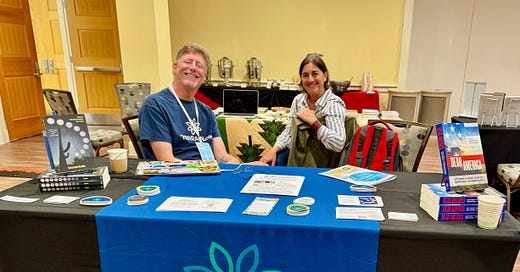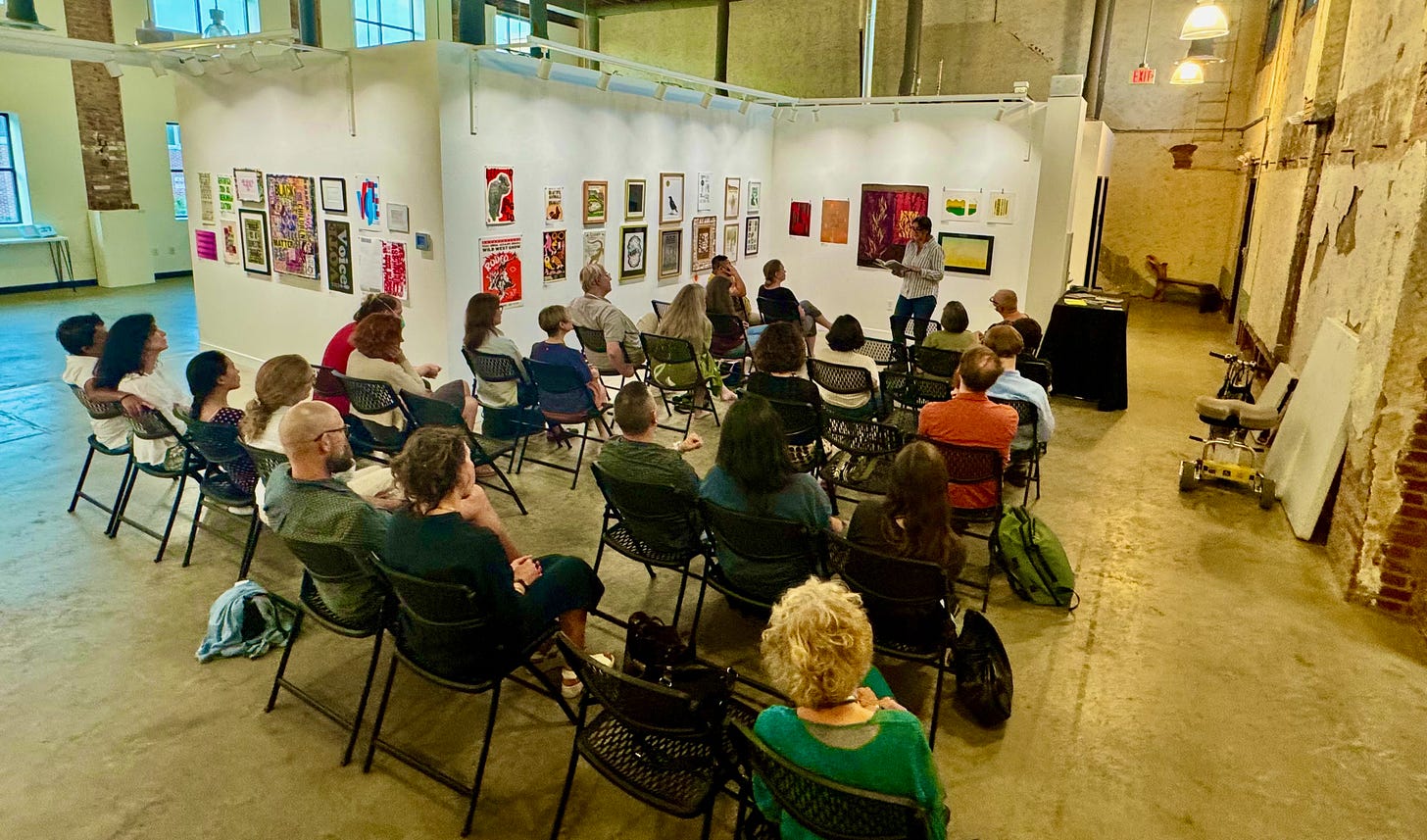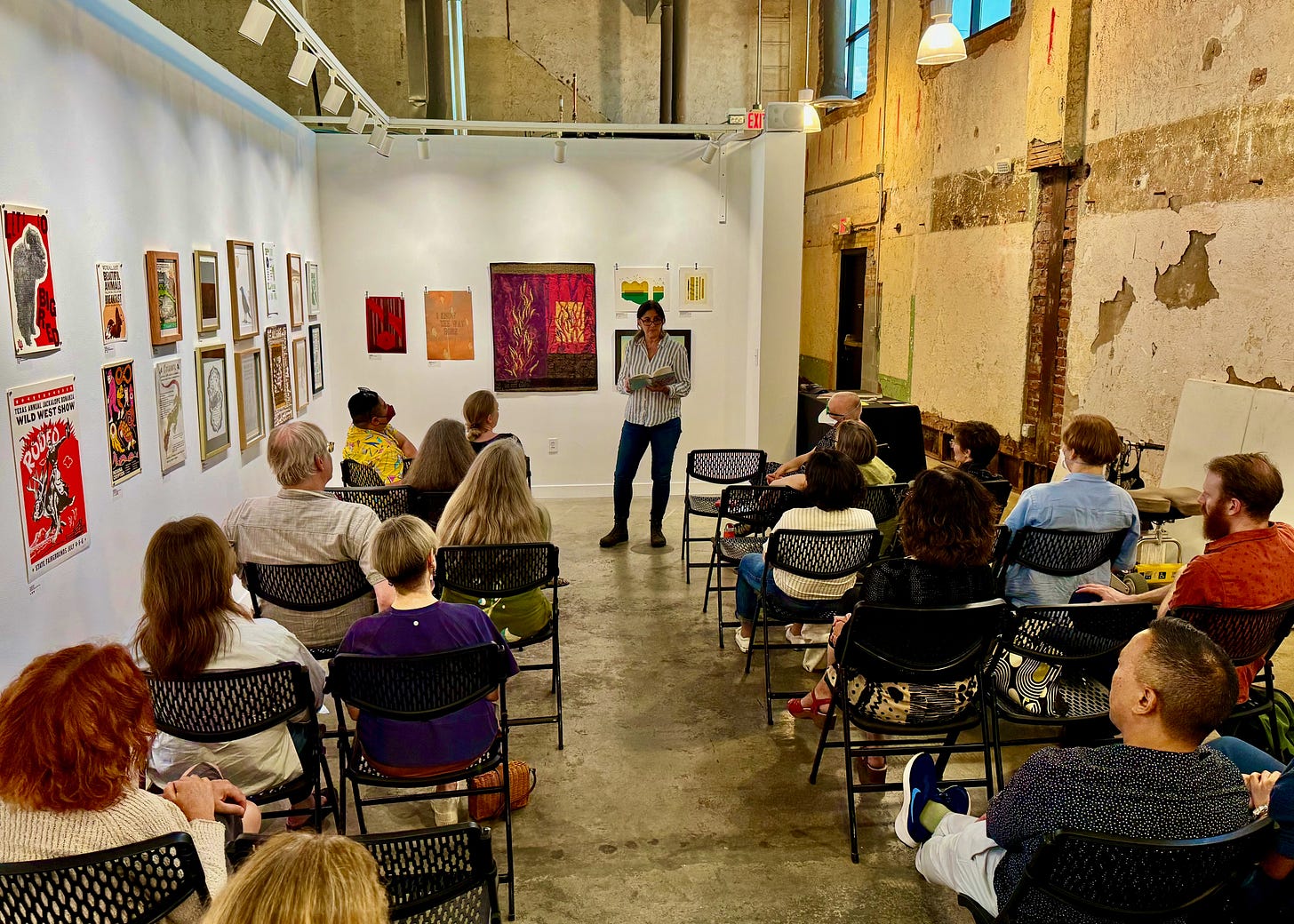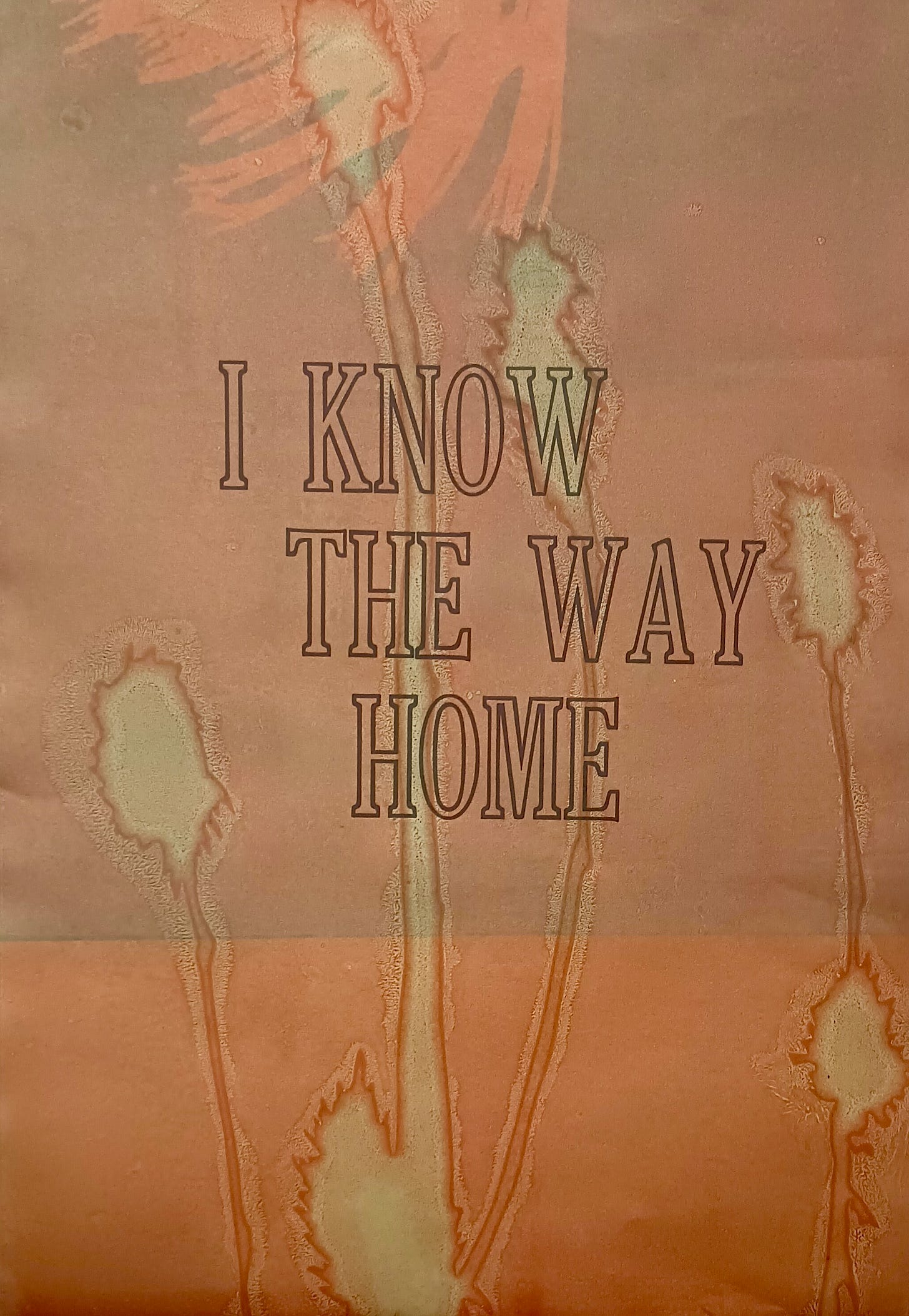—College Park, Maryland
Here I am at the biennial ASLE conference, ASLE being an association of folks who study literature and the environment, mostly professors and PhD candidates.
Normally if I were attending a conference such as this, it would be as a speaker. This year I’m an exhibitor. The exhibit hall is a ballroom in the Student Union at the University of Maryland, where I have six feet of real estate. Around me are publishers—presses from the University of Virginia, Georgia, West Virginia, and so forth.
Directly behind me is Simmons Buntin, my old friend, representing terrain.org, online eco magazine. I first met Simmons in 2010 at Wildbranch Workshop in Environmental Writing, and we have stayed in touch over the years. I happily read terrain.org.
When I say “directly behind me,” I mean that I can reach out and touch him. He is working at his computer, and I’m typing at mine. That’s because the exhibit hall is empty. All the scholars are in concurrent sessions with titles like “Decolonial Environmentalism” and “Transnational Ecopoetics.”
An In-Person Event
Every table comes with a black tablecloth and two chairs. Across mine I have spread a pine tree quilt stitched by my sister, an art quilter, and atop it I lined my books. My exhibit is my work. A pine-needle basket offers up my business cards, and beside it is a pile of bookmarks and another of stickers that say, “Stories can save the wild.” A note asks people to drop their email address in a wooden bowl if they wish to win free tuition in my writing course “Magical Craft of Creative Nonfiction.”
Why Am I Here?
To see what the enviro scholars are thinking about.
To hear what they are reading.
To make sure they don’t forget me.
To promote the book about place.
To invite them to take my writing courses.
To offer to visit their classes.
Except I’m not smart enough for this conference. By “smart” I mean “academic.” Around me I hear words like “pedagogy” and “post-modernism” and “ecogothic,” and to be honest, I don’t understand what they mean.
I understand manatees. I understand mycelia. I understand live oaks.
And meeting new generations of environmental scholars is a pleasure.
Let Me Introduce You
One young woman from Gettysburg College has been studying beavers on the battlefield at Gettysburg. Some people want the beavers gone because, as the young woman told me, they were not present during the battle. By 1843 beavers had been extirpated from the area.
“Beavers are nocturnal,” I say. “How do you study them?”
“We go onto the battlefield at night,” she said. She is wearing a colorful dress, and her glasses are large and stylish. “We watch them.” They observe the beavers. Count the beavers. Interact with the beavers.
“Has anything mystical happened to you on that battlefield?” I asked her. When I was at Gettysburg, I had an almost palpable experience of feeling spiritual sadness.
She shakes her head. “No,” she said. “Nothing strange has happened, but I know what you mean.”
A dark-headed woman standing nearby joins the conversation. Her husband goes out every night, she says, kayaking on a Virginia river where they live, to commune with beavers. Every night they come up to his kayak, greeting him. Sometimes they surround him. He has named them. He slips from his boat and swims with them. They are his friends.
A tall gender-studies scholar from the Netherlands comes by to give me a copy of her book. We have already spoken a couple of times. Her name is Magda, and she was born in Poland. Her book is about breathing, how air is common and yet also is owned by the privileged since less privileged people often breathe air that is more polluted, more toxic. The theme of the ASLE conference is “Collective Atmospheres”—however you want to interpret that—so her work is a perfect fit. I trade her a copy of Craft & Current.
Another young person approaches my booth. I recognize them but I have no idea from where. “Bread Loaf,” they say. “We were there at the same time.”
“Aha!” I say. “That’s it! I remember you.” They pull up a chair. They are in a Ph.D. program in California now, and their dissertation is on Portland’s response to heat—how Portland didn’t have the infrastructure for the intense heat that has descended on it and how it has sped to catch up.
A young man wanders by and tells me that he studies my work. I ask what he studies, and he tells me human relationships with trees.
Along comes a young woman who writes about plants. She has bee balm tattooed on her neck, white locust on her forearm. She has other tattoos too. She kindly allows photos.
I’ve very much enjoyed meeting people, asking where they’re from and what they study and how they’re doing. It’s nice. I always offer them a business card, which contains my photo. “In case you need me,” I say.
The Highlight
The highlight of the conference so far has been a reading in the local community, at the Pyramid Atlantic Art Center in Hyattsville. The center offers workshops in letterpress printing, printmaking, papermaking, and book arts, and the space makes for a beautiful venue, with art posters hanging on the walls.
Terrain.org organized the readers—poet Petra Kuppers, poet Sueyeun Juliette Lee, Simmons, whose last book is Satellite: Essays on Fatherhood and Home, Near and Far, and me. We each had 11 minutes, and I read an excerpt from the monarch butterfly essay in Wild Spectacle.
But the best part was that two writers with whom I’ve worked online—Dr. Xiumei Pu and Julie Friar—came to the reading. Xiumei was standing in the back when the event ended. She set down her bag and opened her arms. We hugged three times. Julie was nearby and as she hugged me she said, “I’m Julie Friar.” Something very beautiful and trusting gets created in the online courses, and seeing those two writers for the first time ever felt like a homecoming.
One More Highlight
I visited 11701 Berwick Road in Silver Spring, Maryland, which you may recognize as the address of Rachel Carson. The home is now owned by the National Park Service. It is not open to the public, and I didn’t get inside, but I enjoyed approaching the place where one of my heroes lived. And died. A wild pollinator garden takes up much of the yard.
I’ve loved being in DC, my favorite U.S. city outside of Savannah. I’ve spent many moons in a row at home on the farm, talking to the horses, so I’ve been very much enjoying the people, coffeeshops, murals, neighborhoods, trees. I’ve enjoyed being on a university campus and around intellectuals. I’ve loved seeing art and talking books. Oh my, I have loved the ideas flying around.
But there was one print at the art center that kept catching my eye, because it’s so true.
I Know the Way Home
And that’s where I’m headed.
P.S.
.;=]=[,p]=\-[;
(That line was typed by Little Fawn, infant daughter, and I decided to leave it for you.)











Little Fawn is already writing, wow!
Oh my goodness, that image of someone communing and swimming with the beavers at night. Thank you for sharing that.